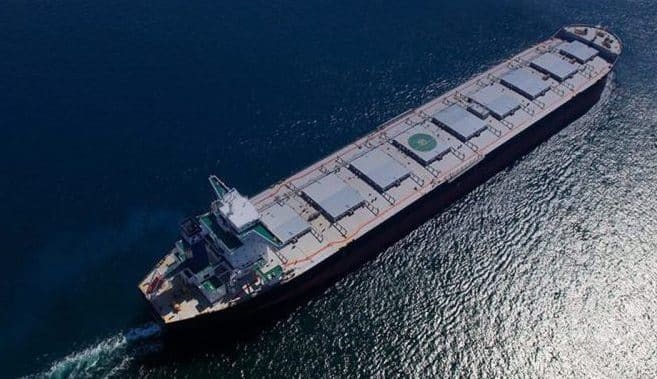Bauxite steals iron ore’s thunder
Iron Ore's Decline: A Shift in Global Shipping

Iron ore remains the leading contributor to global dry bulk tonne-mile generation, but its dominance is waning. According to a recent report by Greece’s Ursa Shipbrokers, its share has decreased from 41.5% in 2015 to an estimated 36.2% in 2024. This decline is attributed to China’s evolving steel production model and the rapid growth of other cargoes, particularly bauxite, which is now one of the fastest-growing segments in the dry bulk market.
Shifting Cargo Trends in Dry Bulk Shipping
While iron ore continues to play a significant role in global shipping, its relative importance has diminished over the past decade. The report from Ursa Shipbrokers highlights that iron ore’s share of dry bulk tonne-mile generation has dropped to around 37.1% in 2025 year-to-date. This trend is linked to the maturation of China’s steel-intensive growth model, which has seen a shift towards other commodities. Bauxite, for instance, has surged from just 2% of the market in 2015 to an impressive 8.4% in 2025 year-to-date. This growth is largely driven by the establishment of alumina refineries in China and increased exports from Guinea, a key player in the bauxite trade.
Coal, which includes both metallurgical and thermal varieties, remains the second-largest segment in dry bulk shipping. After reaching a peak of over 25% of global tonne-miles in 2018, coal’s share has fluctuated. It fell to a low of 21.7% in 2020 but rebounded to 24.2% in 2023, reflecting its role as a backup energy source during the global energy crisis. However, coal’s share has since retreated to 21.0% in 2025 year-to-date, marking the lowest level in a decade.
Emerging Markets and Future Prospects
The landscape of dry bulk shipping is evolving, with bauxite exports from West Africa significantly impacting the market. Recent data from Jefferies indicates that West Africa now accounts for 14% of capesize liftings, up from 6% three years ago. This shift is attributed to the robust growth of bauxite exports, particularly from Guinea. Analysts predict that the upcoming launch of the Simandou iron ore project in Guinea will further tighten the market by increasing long-haul cape loadings.
In addition to bauxite, the grain sector has shown resilience, with shipments (excluding soybeans) contributing between 8.4% and 10.1% to global tonne-mile generation over the past decade. Combined grain and soybean shipments peaked at 16.6% in 2020 and currently stand at 14.0% in 2025 year-to-date. As the demand for electric vehicles and construction materials continues to rise, the bauxite trade is poised to become a significant growth driver in dry bulk shipping, marking a notable shift in global trade dynamics.
